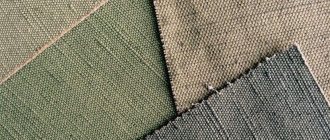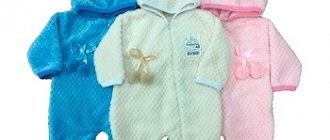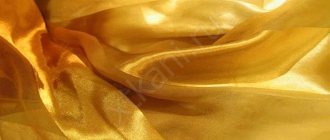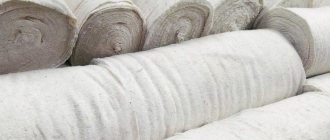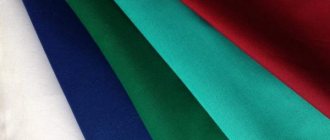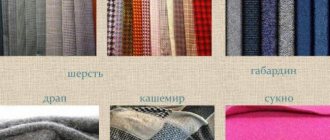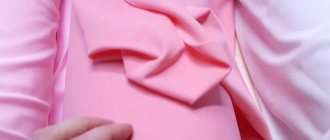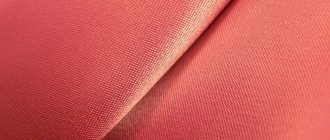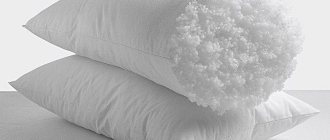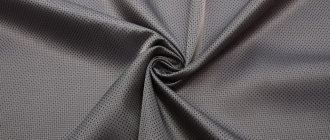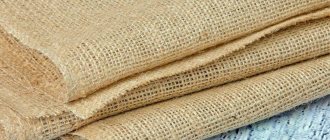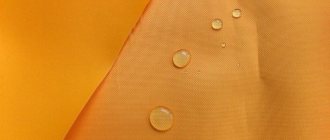Man-made fiber materials are becoming increasingly popular and in demand in the clothing industry, fashion industry and other fields. This is due to the presence of diverse, and even unique, characteristics. At the same time, production costs are relatively low, which further expands the scope of their application. Let's find out what synthetic fabrics are made of and what characteristics they have. We will also consider the main types, advantages and main areas of use.
5.1 Characteristics
5.1.1 HME must comply with the mandatory requirements of this standard, developed in its development by ND - technical specifications (TS) for mass-produced products or technical specifications (TOR) for HME of single production and be developed in accordance with technological documentation.
5.1.2 TVO is produced on modernized pile weaving machines TV-160-ShL using pile weave without cutting the connecting warp threads.
5.1.3 TVO can be produced harsh, with antistatic treatment and (or) heat-stabilized, single-color, with a single- or double-sided color effect.
5.1.4 The nomenclature and limit values of mandatory indicators, their applicability for various groups of HME are given in Table 1.
Table 1
| Indicator name | Limit value for HME | Test method item number | |||
| press | depreciation (damper) | interior | |||
| harsh | with antistatic treatment | ||||
| Air permeability, dm3/(m2×s), not less | 400 | 400 | 400 | 400 | 8.1 |
| Vapor permeability, m2/(cm2×h), not less | 6 | — | — | — | 8.2 |
| Heat resistance, %, not less | 80 | — | — | — | 8.3 |
| Hygroscopicity, %, no more | 8 | — | — | — | 8.4 |
| Change in size in hot air after soaking, %, no more | 10 | — | — | — | 8.5 |
| Color fastness to dry friction, points, no less (for TVW made of dyed threads) | — | — | 3 | 3 | 8.6 |
| Specific surface electrical resistance, Ohm, no more | — | — | 1 x 1012 | 1 x 1011 | 8.7 |
| Normal sound absorption coefficient in the frequency range from 2000 to 6300 Hz, not less | — | — | 0,3 | 0,3 | 8.8 |
| Ignition time, s, not less | — | — | 2,0 | 2,0 | 8.9 |
| Compression resistance force, N | Indicated in the RD for a specific HME | — | — | 8.10 | |
| Relative compressive strain, % | Same | — | — | 8.11 | |
| Effective service life, cycles | » | — | — | 8.12 | |
5.1.5 Mandatory requirements in the RD are:
- purpose;
- symbol;
— type, linear density and diameter of the feedstock, ND for it;
— nominal width and its maximum deviations;
— nominal surface density and its maximum deviations;
— nominal thickness and its maximum deviations;
- specific level of indicators according to the table (clause 5.1.4) and maximum deviations (if the specified maximum level according to the table is insufficient in the opinion of the consumer).
5.1.6 When including HME indicators in the RD at the request of the consumer (depending on operating conditions), the requirements for which are not regulated by this standard, their mandatory nature, standard level, maximum deviations and control method must be indicated.
5.1.7 TVW can be produced in widths from 100 to 155 cm.
5.1.8 Limit deviations from the nominal width - ± 3%.
5.1.9 HME can be produced with a thickness from 3 to 20 mm.
5.1.10 Quality products are considered to be HME that meets the mandatory requirements of this standard and ND, and does not have defects in appearance exceeding the size and quantity in accordance with 5.1.13.
5.1.11 The following defects in appearance are not allowed in HME:
- hole;
- hole;
- earned foreign item;
- a loop of warp or weft connecting thread on the ground surface;
- different thickness of HME in a piece, exceeding its maximum deviations;
- spot;
- braiding.
5.1.12 Inadmissible defects in appearance according to 5.1.11 must be cut out at the manufacturer.
5.1.13 Other unacceptable and permissible defects in appearance (blind, span, undercut, tightening from a unit, etc.), their sizes and quantity are established by agreement between the manufacturer and the consumer and are indicated in the RD for a specific HME.
Types and uses
Typically, each material protects against several factors. And sometimes each of the components serves several purposes. In the article we will look at which one it serves and for what purposes.
Aramid
This material is made from heat-resistant polyamides. Used for sewing clothes for people working in extreme conditions. Resistance to abrasion, mechanical stress, resistance to temperatures. Doesn't take much time to make or maintain.
Note! Over time, after several washes and use for several months, the product loses its strength. Therefore, it is recommended to combine.
Tarpaulin
This is a material consisting of several types of raw materials - cotton, linen, synthetics. -It is usually treated with additional impregnation, which has fire-resistant, water-resistant or other properties. Used in the manufacture of covering components and workwear. Can even be used when sewing gloves or special shoes.
Basalt
This technical fabric is made from basalt threads. The weave of the threads varies. Does not conduct heat, practically does not burn. Resistance to rotting, acids, alkalis.
Note! Raw materials are used in aircraft manufacturing and construction.
Rags
Made from terry or cotton. It is characterized by hygroscopicity, softness, and, according to GOST, complete absence of lint. Used for wiping hands and production equipment from dirt and oil.
Author:
Anastasia Kukushkina
I hope you enjoy the article I have prepared for you! If you find errors in it, write to me about it! I will answer any questions you have, ask them!
